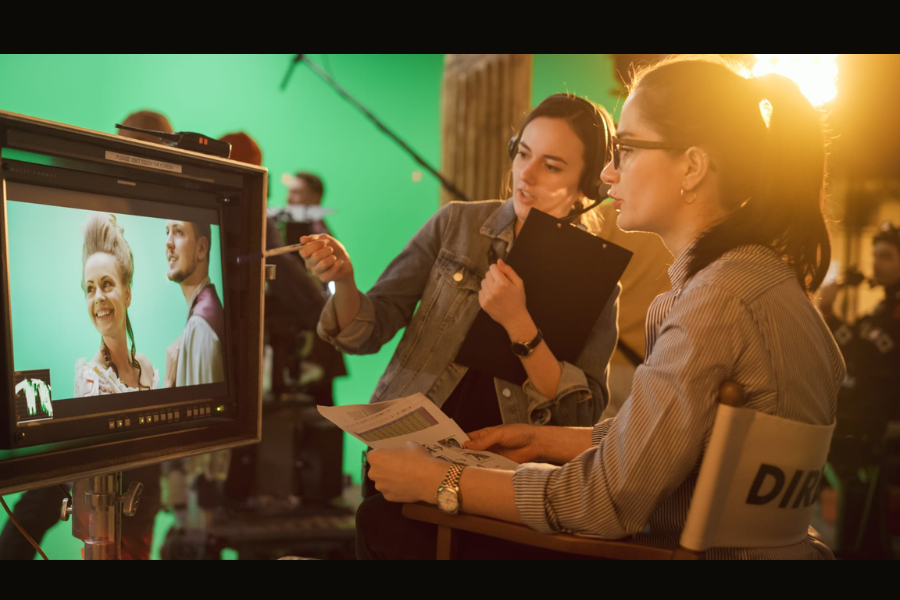Introduction
The concept of “recorded shows” represents the shift from live performances and events to formats designed for broadcast, streaming, and archiving. This evolution has significantly altered the entertainment industry, offering audiences worldwide a variety of content accessible at their convenience. This article explores the historical development, technological advancements, and cultural impact of recorded shows, as well as future trends and the broader implications of this dynamic medium.
Evolution Through History
Innovative Beginnings
The process of recording shows began with the development of sound recording technologies in the latter part of the 19th century. The phonograph, invented by Thomas Edison in 1877, made it possible to record and play back sounds. This was a defining moment ever. This headway laid out the preparation for future enhancements in both telecom and recording.
The Rise of Broadcast Media
By the middle of the 20th century, live broadcasts were reaching homes all over the country thanks to radio’s widespread adoption. The presentation of attractive tape during the 1930s permitted these transmissions to be recorded for later playback, further developing creation quality and adaptability. Recorded shows gained even more popularity as television became more popular in the 20th century. The capacity to record and replay television programs reformed the business, prompting the making of famous series, for example, “I Love Lucy,” which set a trend for future TV programming.
Digital Revolution
During the twentieth 100 years, radio arose as a famous medium, conveying live transmissions to homes cross country. These broadcasts could be recorded and replayed later when magnetic tape was introduced in the 1930s, which improved production quality and flexibility. TV, which built up forward movement during similar period, further pushed the ubiquity of recorded shows. The industry was transformed by the ability to record and replay television shows, which led to the creation of iconic series like “I Love Lucy,” which set the standard for future television shows.
Technological Progressions
The Era of High Definition
In the early 2000s, a significant technological advancement occurred when television switched from standard definition to high definition (HD). HD made the picture clearer and more detailed, making the experience for the viewer better. Today, 4K and, surprisingly, 8K goals are turning out to be more normal, offering uncommon degrees of detail and submersion.
The Evolution of Streaming Services
The ascent of web-based features has been driven by the extension of the web and broadband network. Stages like Netflix, Hulu, and Amazon Prime Video have gained by recorded shows, giving broad libraries of content accessible on-request. This shift has changed the dispersion of content as well as its creation, with many administrations putting vigorously in unique programming.
The Impact of Cloud Technology on Remote Production
Cloud technology has revolutionized the recording and production of shows, allowing for the storage and streaming of vast amounts of data and enabling seamless access to content worldwide. Advances in remote production technologies have made it possible to produce and broadcast shows from nearly any location, reducing the need for traditional studio settings.
Cultural Impact
Worldwide Influence
One of the most significant impacts of recorded shows is their global accessibility. Audiences worldwide can enjoy the same content, fostering shared cultural experiences. Shows like “Friends” and “Game of Thrones” have gained international fame, influencing cultures and setting universal standards.
Shifting Viewing Patterns
Viewing habits have drastically changed as a result of the ability to record and stream shows. Binge-watching, in which a person watches multiple episodes or entire seasons at once, is now common. This pattern has affected how shows are delivered and circulated, with numerous makers embracing serialized narrating to take care of crowds who like to watch content at their own speed.
Safeguarding Cultural Legacy
Recording shows is essential for preserving cultural heritage. Iconic broadcasts, notable performances, and significant events are archived for future generations. This preservation ensures that important cultural moments are not lost to time, remaining accessible to both enthusiasts and historians for continued exploration.
Economic Influence
Emerging Revenue Strategies
The change to recorded shows has presented new income models in the media business. Promoting, membership administrations, and pay-per-view models have become common. Web based streaming stages, specifically, have made a rewarding business sector, with organizations like Netflix putting billions in unique substance to draw in and hold endorsers.
Expanding Industries and Employment Opportunities
The change to recorded shows has presented new income models in the media business. Promoting, membership administrations, and pay-per-view models have become common. Web based streaming stages, specifically, have made a rewarding business sector, with organizations like Netflix putting billions in unique substance to draw in and hold endorsers.
Navigating Challenges and Considerations
Navigating Piracy and Copyright Challenges
One of the significant difficulties confronting the business is robbery. Recorded shows are frequently shared without permission due to the ease with which digital content can be copied and distributed. Digital rights management (DRM) technologies and stringent intellectual property laws have been implemented to safeguard intellectual property as a result of this issue.
Striking a Balance: Quality vs. Quantity
The expansion in recorded content has raised worries about its quality. The strain to persistently deliver new material can some of the time focus on amount over quality. Even though there are productions of high quality, the sheer volume of content that is available can make it difficult for consumers to choose the best options.
Overcoming Technological Barriers
Despite technological advancements, accessing recorded shows still faces barriers. Streaming high-definition content requires high-speed internet, which is not universally available in all regions. This digital divide can limit the accessibility of recorded shows in areas with unreliable connectivity, hindering equal access to digital entertainment.
Future Trends in Recorded Shows
Exploring Interactive and Immersive Experiences
Future progressions in intuitive and vivid advances are ready to change the scene of recorded shows. Innovations like computer generated simulation (VR) and expanded reality (AR) are supposed to improve the survey insight, giving more intelligent and drawing in ways of consuming substance. The ways in which viewers interact with recorded shows could be further enhanced by these innovations, which have the potential to provide them with individualized experiences.
AI-Powered Personalization
Artificial intelligence (AI) is set to significantly shape the future of recorded shows. Simulated intelligence calculations can investigate watcher inclinations and conduct to suggest customized content. This capability not only helps viewers discover shows that align with their interests but also enhances their overall viewing experience by tailoring recommendations to individual tastes and habits.
Promoting Sustainability: Eco-Friendly Practices
The emphasis on eco-friendly practices and sustainability is growing as the industry grows. Priorities like using renewable energy sources, promoting environmentally friendly content creation methods, and lowering productions’ carbon footprints are becoming increasingly important. The business is effectively looking for ways of offsetting development with natural stewardship, meaning to contribute decidedly to maintainability endeavors while proceeding to advance and extend.
Summary:
The term “recorded shows” refers to a significant shift away from live performances toward formats that can be broadcast, streamed, and archived. The entertainment industry has been transformed by this development, which has made accessible content available to audiences worldwide. This article follows the authentic turn of events, mechanical headways, and social effect of recorded shows, and examines future patterns and more extensive ramifications. By and large, the excursion started with Thomas Edison’s phonograph in 1877, empowering sound recording and playback. The ascent of radio and TV during the twentieth century further promoted recorded shows. The industry has been transformed by technological advancements like streaming services and high definition, which provide on-demand content of a higher quality. Accessibility has increased as a result of cloud technology enabling remote production. Socially, recorded shows have had a worldwide impact, moving review designs toward marathon watching and saving social legacy. Monetarily, new income models like publicizing, membership administrations, and pay-per-view have arisen, extending ventures and business open doors. However, technological barriers, piracy, and striking a balance between quantity and quality remain. AI-powered personalization, interactive and immersive experiences through virtual and augmented reality, and sustainable content production practices are among the future trends.
FAQs:
1. What is the concept of “recorded as a show”?
- The concept of “recorded as a show” refers to the transition from live performances to formats designed for broadcast, streaming, and archiving, allowing content to be accessed on-demand.
2. How did recorded shows evolve historically?
- Recorded shows evolved from Thomas Edison’s phonograph in 1877, through the rise of radio and television in the mid-20th century, to the advent of high definition and streaming services in recent years.
3. What technological advancements have influenced recorded shows?
- Significant advancements include the switch from standard to high definition (HD) television, the rise of streaming services, and the impact of cloud technology on remote production.
4. How have recorded shows impacted global culture?
- Recorded shows have made content globally accessible, influenced viewing habits with the rise of binge-watching, and played a crucial role in preserving cultural heritage.
5. What are the economic implications of recorded shows?
- The shift to recorded shows has introduced new revenue models like advertising, subscriptions, and pay-per-view, and expanded industries and employment opportunities.
Connect with the world through compelling articles and reports at TribuneIndian.com.




